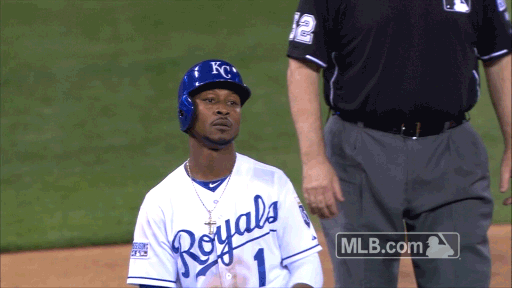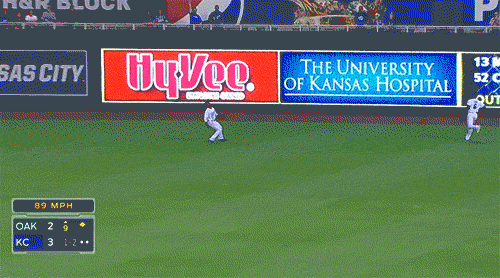Under the right circumstances, I’m all for getting the band back together. If you told me that Noel Gallagher was writing a batch of songs like it was 1994 and his brother Liam’s voice was healthy and full of youthful attitude, I’d be all-in on an Oasis reunion. But the last time Noel wrote a great song was over 20 years ago. And Liam’s voice is… a little more ragged than it once was.
Fine. I’m an Oasis fan. But I’m clear-eyed enough to realize that if the brothers Gallagher got back together, it wouldn’t be because they were reaching the same levels of greatness they achieved in the mid-1990s. It would be because there was a pile of cash to be made. Nostalgia often comes with a price.
The Royals have been on a bit of a reunion kick of their own, bringing back some of the players from the glory days of the last decade. Joakim Soria missed out on the pennants and returned just as the team was trending downward. More recently, Greg Holland enjoyed a nice couple of months last year and is back for a return engagement. He’s joined in camp by his old bullpen mate Wade Davis. Ervin Santana has returned to rave Dominican League reviews. He’s battling for a spot in a rotation that will likely include Mike Minor.
And late Tuesday, it was revealed the Royals were close to an agreement with Jarrod Dyson. Initial reports have the deal as a major league contract at $1.5 million.


They say there’s no such thing as a bad one-year deal. There can be such a thing as a confounding one-year deal. That’s what we have here. It’s difficult to see how Dyson fits on the team as currently constructed. In my previous roster projection, I had Nick Heath as a fourth/fifth outfielder. I even comped Heath thusly:
If you’re looking for a burner comp, Heath is more Terrance Gore than Jarrod Dyson.
That was intended as a comp for those players in their prime. Dyson, entering his age 36 season, is past his. Which makes his addition to this ascendant Royals club all the more questionable.
Dyson has never been a league-average offensive performer, but his production at the plate has declined precipitously since leaving Kansas City after the 2016 season.
If a team is bringing Dyson on board, it’s not because of a productive bat. He’s made a solid 2.0 fWAR living on his speed and defense.
About that…
Dyson’s Sprint Speed, elite as a 30-year-old for the Royals in 2015 at 29.5 ft/s, has declined over the years to where he was at 26.9 ft/s last year for the Pirates and White Sox. That’s dropping from the 98th percentile to the 52nd. I know, I know…the 2020 season was all about the bizarre, but speed is one skill that shouldn’t have had a negative impact in a shortened season. One cannot outrun age.
As you can see above, in addition to losing speed in general, he was a lot slower out of the box in 2020. His infield hit rate was 4.2 percent, well off his career rate of close to 10 percent. Again, that’s a number that’s been off his career mark the last several seasons.
Obviously, that speed is what made Dyson an elite defender in the outfield, especially center. And we know the premium Dayton Moore puts on outfield defense at The K. But with Dyson losing a step, that defense wasn’t so premium in 2020.
Baseball Savant maps Responsible Plays and you can see from the gif below that Dyson’s range in center declined from 2016 to 2020. The sample size from 2020 was plenty smaller, but that shouldn’t obscure the overall point about the decline in the area covered.
Dyson’s jump as measured by Statcast, like the rest of his defense, has been elite, entered negative territory for the first time in the Statcast era last summer. He made up for the lack of reaction and “burst” speed by running better routes in 2020, but a good route alone cannot compensate for an overall decline in foot speed.
When the Royals were winning pennants and championships, Dyson represented all that was good about those teams.
A 50th round draft pick, he exceeded expectations and excelled. His brash attitude symbolized those ultra-aggressive Royals who could beat you in myriad ways. Times have changed. Players and managers have moved on. As the philosopher-poet Springsteen once noted, trying to recapture those glory days ain’t easy.
At this stage of their respective careers, Heath would probably outperform Dyson as a fourth outfielder/pinch-runner/late-inning defensive replacement. With Heath making close to the major league minimum salary, he represents better value and at his age, more upside as well. As much as you may like him as a player, it’s difficult to see how Dyson is an upgrade.
A criticism I’ve often leveled at Moore is his carelessness in building out the end of his roster. In the grand scheme of payrolls and playing time, the decision between a veteran and a minor leaguer who isn’t a top prospect isn’t going to make or break the 2021 version of the Royals. But it’s just bizarre that Moore makes the same kind of miscalculations again and again. This doesn’t—and shouldn’t—erase the positive moves the general manager has made this offseason. It’s a minor move that won’t have a major impact. Let’s just characterize it as a head-scratcher.
The Davis and Santana contracts are minor league deals with an invite to camp. It sounds like the Dyson deal is a major league deal for guaranteed money. Truthfully, a minor league deal is the path Moore and the Royals should’ve gone down with Dyson as well. See if he has anything left in the tank.
It will be fun to have Dyson back on the base paths at The K, but the glory days have come and gone. Nostalgia has its place, but there are new players attempting to write their histories. The focus should be on them. And the future.








